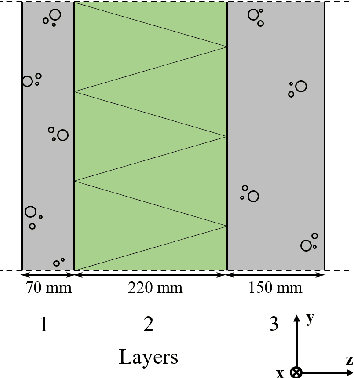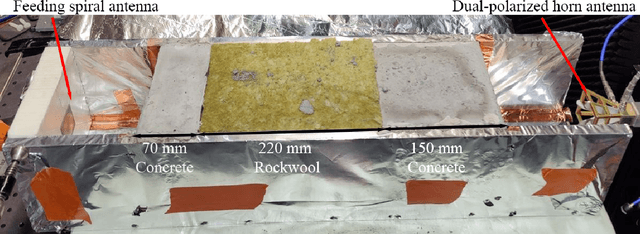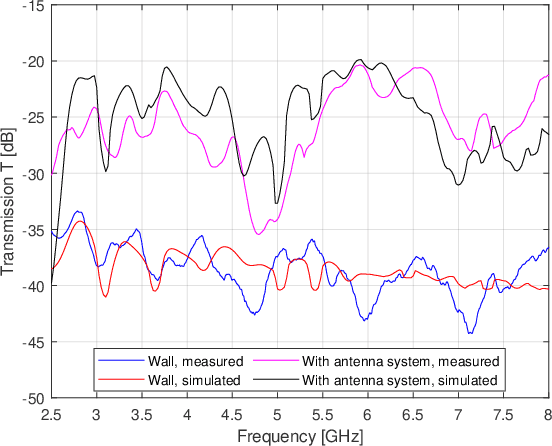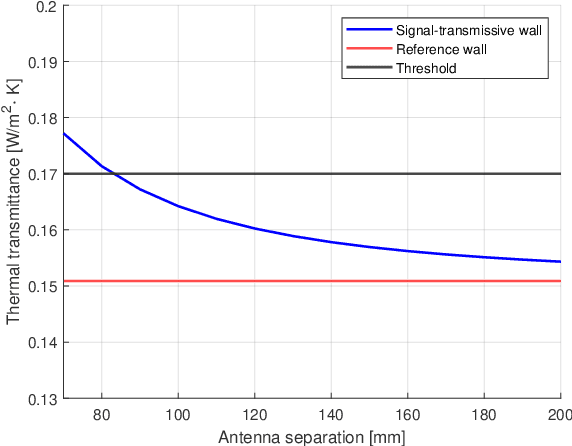Ultrawideband Antenna Systems Embedded into a Load Bearing Wall for Connected Buildings
Paper and Code
Jul 13, 2022



The importance of indoor mobile connectivity has increased during the last years, especially during the Covid-19 pandemic. In contrast, new energy-efficient buildings contain structures like low-emissive widows and multi-layered thermal insulations which all block radio signals effectively. To solve this problem with indoor connectivity, we study passive antenna systems embedded in walls of low-energy buildings. We provide analytical models of a load bearing wall along with numerical and empirical evaluations of ultrawideband back-to-back antenna spiral antenna system in terms of electromagnetic- and thermal insulation. The antenna systems are optimized to operate well when embedded into load bearing walls. Unit cell models of the antenna embedded load bearing wall, which are called {\it signal-transmissive walls} in this paper, are developed to analyze their electromagnetic and thermal insulation properties. We show that our signal-transmissive wall improves the electromagnetic transmission compared to a raw load bearing wall over a wide bandwidth of 3-8 GHz, covering most of the new radio frequency range 1 (NR FR1), without compromising the thermal insulation capability of the wall demanded by the building regulation.
 Add to Chrome
Add to Chrome Add to Firefox
Add to Firefox Add to Edge
Add to Edge